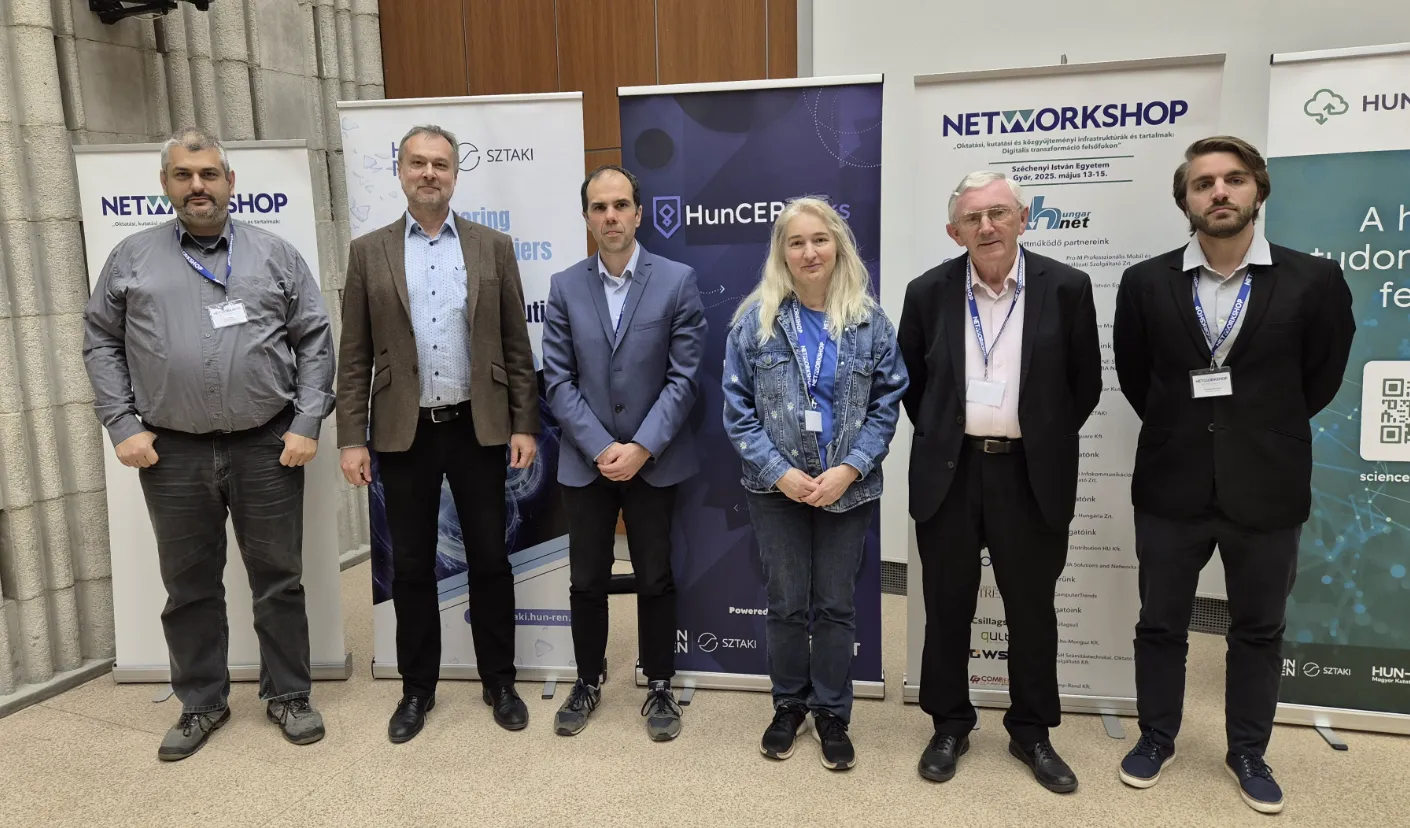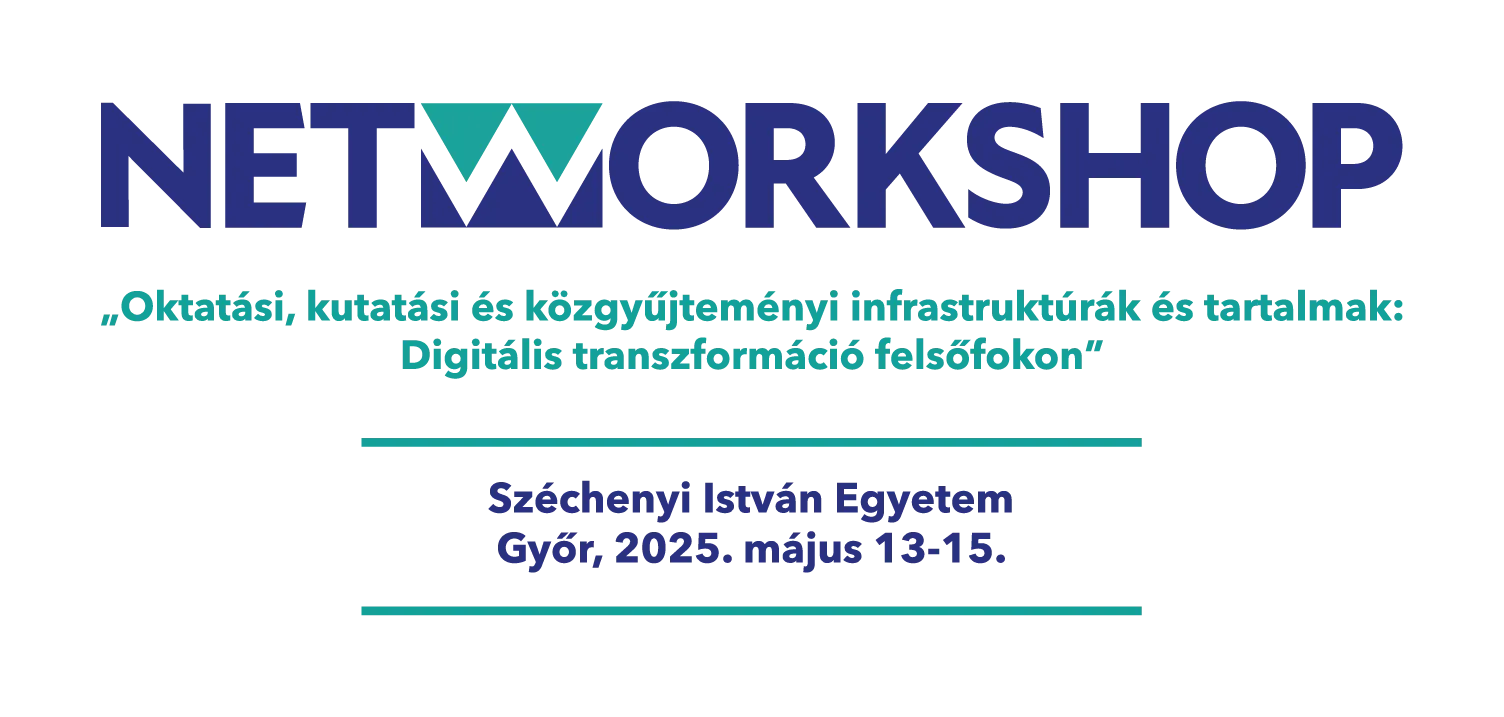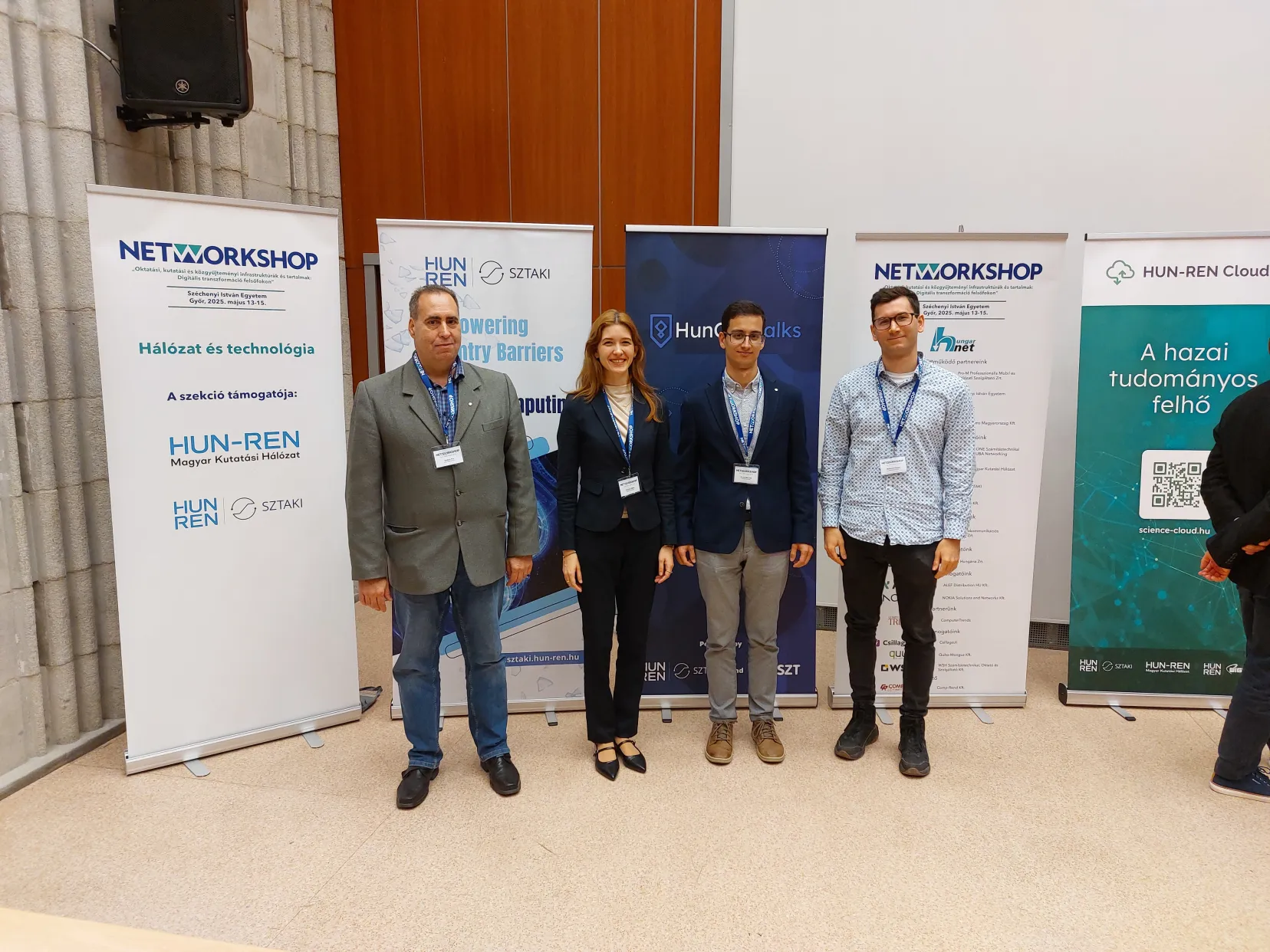Strong HUN-REN SZTAKI Presence at Networkshop 2025
The host of Networkshop 2025 was Széchenyi István University in Győr, which provided the conference venue for more than 100 presentations between May 13 and 15, 2025.
This year marked the 34th edition of the Networkshop (NWS2025) conference, organized once again by the HUNGARNET Association. The annual event offers an excellent opportunity for professionals in higher education, public education, research, and public collections to meet and discuss developments in computer networks and applied IT. HUN-REN SZTAKI returned as a diamond-level sponsor this year, supporting the event not only through high-quality presentations but also by organizing engaging side programs.
The conference was opened with a plenary speech by Csaba Gódor, Deputy State Secretary of the Ministry of Energy, followed by two keynote presentations. Professor Dr. Gábor Prószéky (HUN-REN NYTK) guided attendees through the world of large (Hungarian) language models, while Dr. János Nacsa (HUN-REN SZTAKI) discussed how research infrastructure networks can support digital manufacturing.
HUN-REN SZTAKI participated in this year’s NWS with a diverse range of professional presentations
In several parallel sections, many colleagues from SZTAKI represented the Institute. Zoltán Tóth and László Kovács spoke about the operational and development possibilities of the HUN-REN Data Repository Platform (ARP) and the efforts toward the federation of the European Open Science Cloud (EOSC).
Attila Farkas presented a new GPU resource management methodology developed within the AI4Science program, while key users of the HUN-REN Cloud, including the PULI team working on services based on language models, shared their experiences.
The topic of research infrastructures was explored in a roundtable discussion organized by László Kovács, featuring representatives of several national IT infrastructure initiatives.
Tamás Máray introduced how the national scientific cloud (HUN-REN Cloud) connects to European research infrastructures, presenting the international GreenDIGIT project and the SLICES-RI distributed research infrastructure, in which HUN-REN Cloud plays a key role.
Matyás Hajós, Dániel Horváth, Pál Ormos, and Emma Takács successfully presented the outcomes of the 5G-SEDAR project, carried out in collaboration with MM-VILL Ltd. Their talk and poster showcased the progress of the cascade project supported by Imagine-B5G, highlighting how extended reality, artificial intelligence, and 5G technology can be applied in human-robot collaboration.
András Micsik gave insights into how AI and other tools support the scientific classification process within the Hungarian Scientific Bibliography (MTMT).
There was no shortage of network and security-related topics either: Ernő Rigó shared his experiences establishing the Kinin SOC federated security operations center, while Mihály Héder presented current topics from the GÉANT project’s Trust & Identity Incubator. A joint presentation with Magyar Telekom provided an overview of the development and challenges of mobile networks and the 5G campus networks also used by HUN-REN SZTAKI. They discussed real-world use cases such as sporting events (e.g., the Blue Ribbon Regatta) and cashless payment solutions used at festivals. The presentation was closely linked to the aforementioned 5G-SEDAR project talk and poster. It also outlined the opportunities and challenges of introducing 5G Standalone (SA) technology, which enables higher data transfer speeds, lower latency, and entirely new business models for high-throughput services.
Attila Marosi discussed the latest developments, challenges, and future prospects in quantum computing.
Side programs organized by HUN-REN SZTAKI
Conference attendees had the chance to meet the popular portrait-drawing robot at the Institute’s Industry 4.0 lab in Győr. The Piktor-o-bot, operated by Mátyás Hajós, created portraits of participants. Due to high interest, extra time slots had to be added.
The Institute continued its awareness-raising program aimed at fostering understanding and openness toward people with disabilities. Thanks to the Baráthegyi Guide Dog School, participants could experience what it’s like to move around with the assistance of a guide dog. Disability advisor Erzsébet Borsodi held an interactive session featuring Gesztenye, the guide dog.
With the help of the Tandemszem Association, braver participants could also try out a bit of sports: riding a tandem bike with their eyes covered, guided by a sighted person — an unforgettable experience.
We look forward with curiosity to seeing which institution will host the 35th NWS Conference next year, where we plan to return with similarly exciting presentations and programs.


